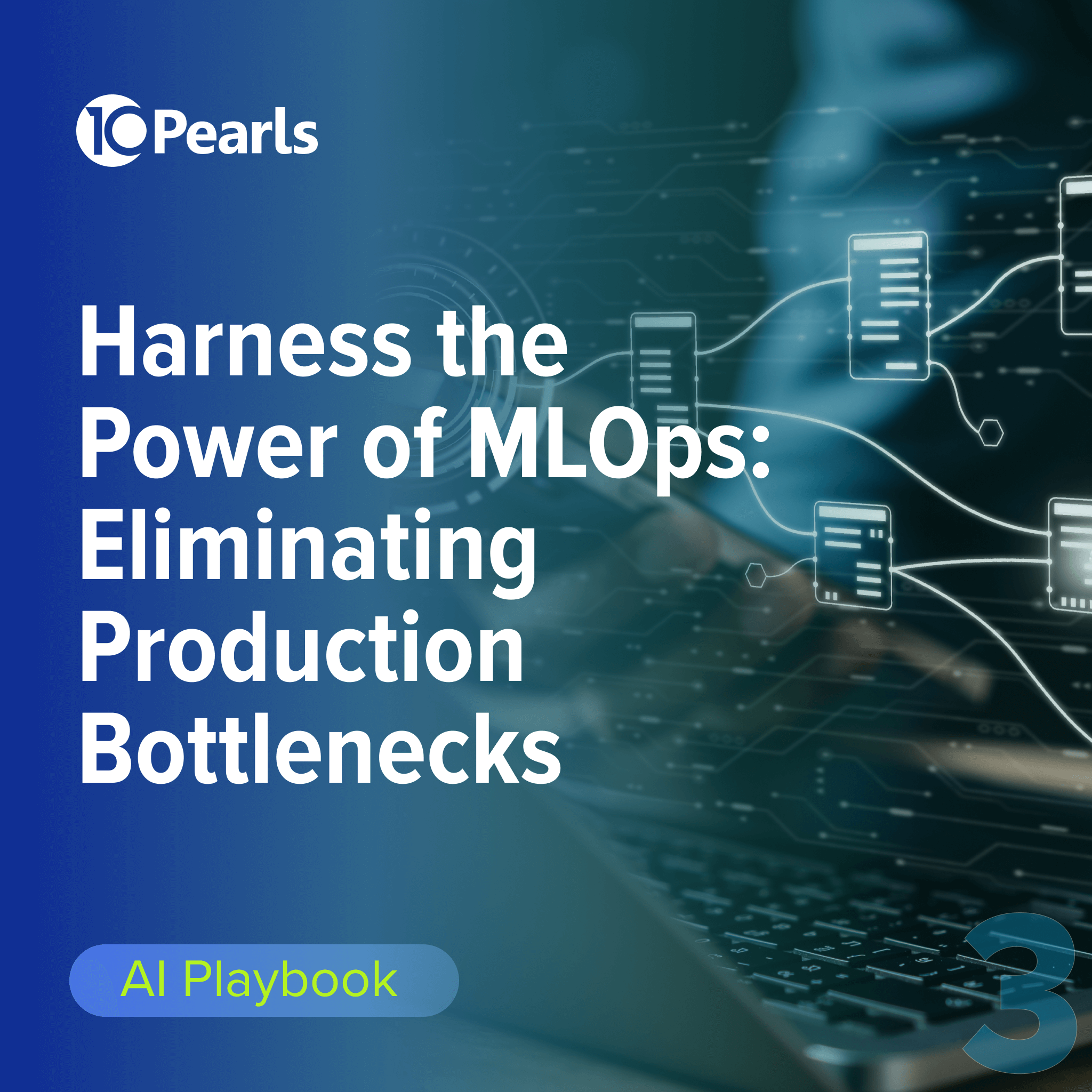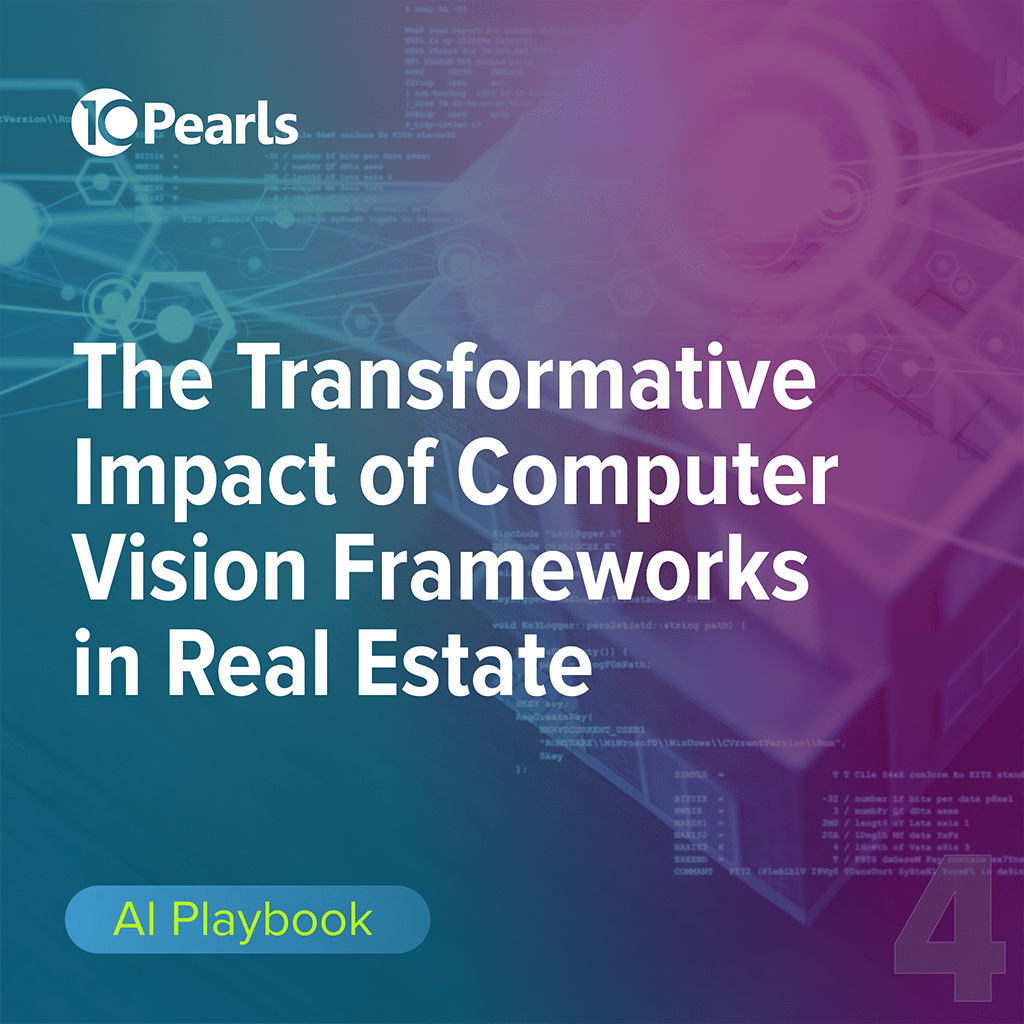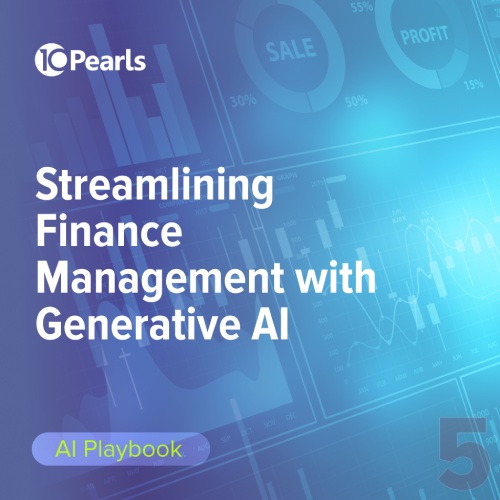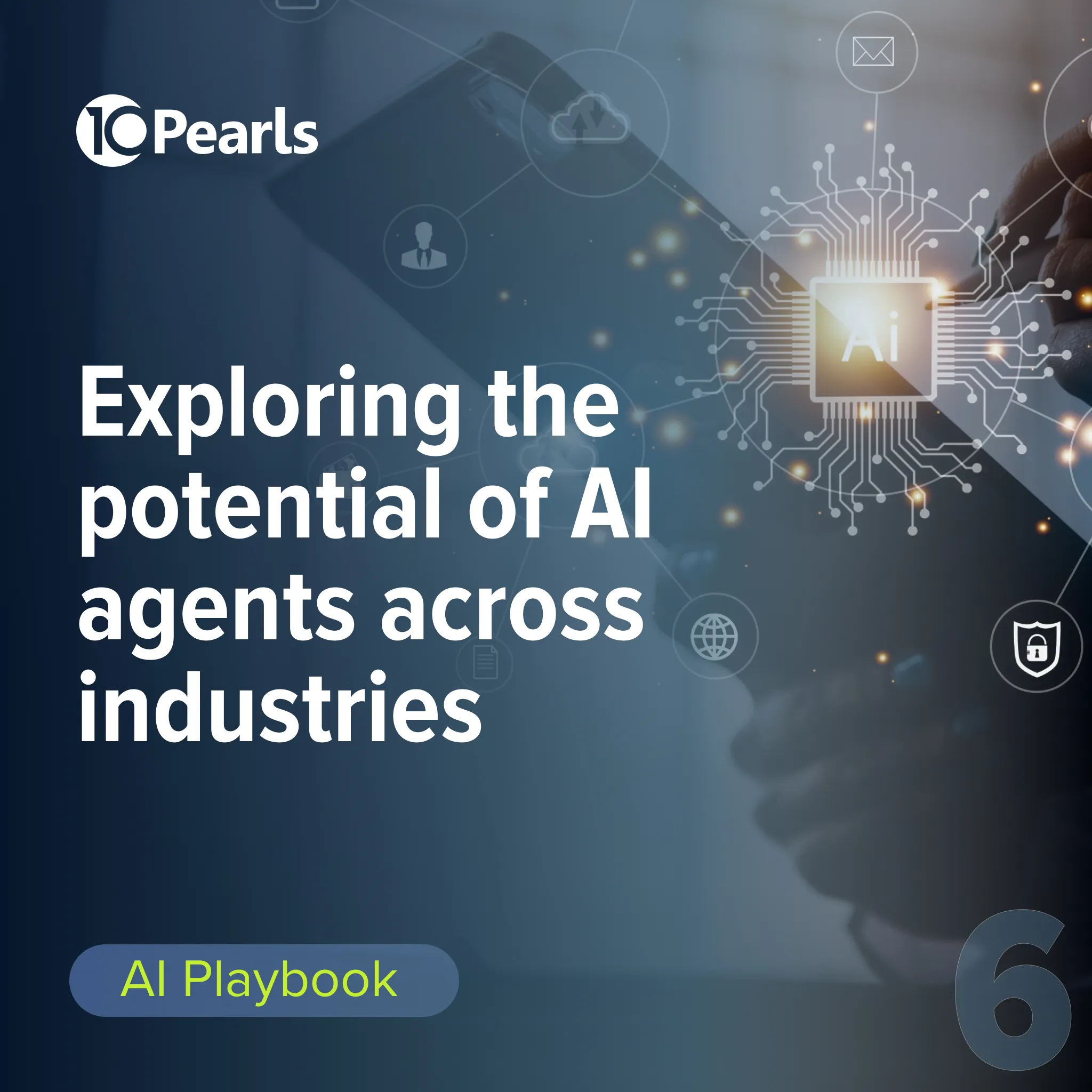

By 10Pearls editorial team
A global team of technologists, strategists, and creatives dedicated to delivering the forefront of innovation. Stay informed with our latest updates and trends in advanced technology, healthcare, fintech, and beyond. Discover insightful perspectives that shape the future of industries worldwide.
Generative AI for Software Development: Boosting Dev Efficiency
As generative AI (GenAI) tools become increasingly accessible, many businesses have begun exploring ways that GenAI can drive efficiency and innovation in the software development lifecycle (SDLC).
Blog contents
- Combining GenAI and SDLC methodologies
- GenAI in the SDLC stages
- Market analysis and trend predictions
- Requirement analysis
- UX design
- Code generation
- Code review
- Code refactoring
- Documentation
- Code Explanation
- Bug detection
- Automated testing
- Manual testing
- Automated deployment
- Potential challenges and considerations
- 10Pearls role in AI-driven software development
GenAI has introduced tools and techniques that help businesses accelerate time to market and improve software quality. Leveraging generative AI for software development offers advantages across all SDLC stages, allowing your organization to optimize workflows and accuracy.
Let’s break down the SDLC and identify key takeaways to leverage GenAI for software development.
Combining GenAI and SDLC methodologies
The software development process involves several stages, each with specific goals. Incorporating GenAI into these stages can help reduce mistakes, make better upfront decisions, speed up the product launch process, and diminish the need for changes later in the development phase.
A typical SDLC begins with planning and design phases, followed by development, testing, and deployment. In the planning and design stages, development teams establish a foundation for a successful software project. This involves validating the assumptions that support the project objectives and requirements, identifying risks, and mapping out a clear path for development. We have written a blog on the importance of early validation when creating a product roadmap, outlining some practical early validation methods.
The development, testing, and deployment stages ensure that the software is built according to the specifications and is tested to uncover and rectify potential problems before being rolled out to the live environment for users. The entire software development process is often long drawn and could take months before it’s market-ready.
GenAI in the SDLC stages
Planning
- Market analysis and trend predictions: GenAI algorithms can analyze vast amounts of data quickly, providing insights into the latest trends, user behavior, and potential opportunities to create highly accurate predictions.
- Requirement analysis: This process can be significantly streamlined by leveraging GenAI’s capabilities to automate the creation of key artifacts. By analyzing past data, GenAI can deliver user stories, acceptance criteria, prioritization strategies, sprint plans, and other relevant documentation that set the course for the development and stakeholders’ expectations.

Design

- UX design iterations: GenAI-powered design tools can generate multiple design options based on best practices and predefined criteria, allowing designers to explore a wider range of possibilities and iterate more quickly to find what most likely resonates with the target user base.
- System design and architecture: GenAI offers a transformative approach to system architecture development, suggesting design patterns and architectural styles tailored to your application’s specific requirements. GenAI can also serve as a sophisticated tool for reviewing and evaluating existing architectures, providing detailed analysis reports with recommendations to achieve optimal software performance and efficiency.
Development
- Code generation: GenAI can assist developers by generating reusable code snippets, suggesting code completions, and writing functions based on prompts, accelerating development, reducing bugs, and improving code quality and productivity.
- Code review: By automating the detection of code smells and style violations, GenAI completely streamlines the code review process, allowing human reviewers to focus on more intensive aspects of the code review process.
- Code refactoring: GenAI can examine code readability, maintainability, and performance to suggest structure optimizations and fixes for coding errors and bugs, enabling developers to address issues more quickly.
- Documentation: GenAI can automatically generate documentation to track any code changes or improvements, establishing a single point of reference for development teams and stakeholders.
-
Code explanation: GenAI can offer explanations for code snippets, helping developers understand complex concepts or unfamiliar code sections.
Testing

- Bug detection: GenAI can identify code bugs, security risks, and performance issues. With self-healing test automation, testing cycles are accelerated, minimizing the need for human intervention.
- Automated testing: GenAI is taking over the creation of test cases and scripts, making tests faster and more accurate. Its capability to execute automated test suites enables continuous testing, an integral part of agile and DevOps practices. Engineers can prioritize and address the most impactful issues by identifying critical defects, ensuring more efficient problem resolution.
- Manual testing: GenAI can analyze the requirements and design of a software application to generate a comprehensive set of test cases that cover all possible scenarios. This includes edge cases and boundary conditions that human testers may not have considered.
Deployment

- Automated deployment: GenAI streamlines infrastructure management by automating Infrastructure as Code (IaC), optimizing releases, and enhancing system improvements. In release automation, GenAI learns from past deployments to refine future ones and suggests improvements, making system management more predictive, efficient, and scalable.
Potential challenges and considerations
Using generative AI for software development offers various advantages. However, effectively leveraging GenAI throughout the software development process requires a deep understanding of GenAI and SDLC methodologies. Collaborating with an experienced custom software development company that can guide you through these challenges will provide significant advantages.
Many businesses opt to collaborate with a software development firm to execute successful GenAI initiatives rather than rely solely on AI tools for assistance. These partnerships bring valuable expertise that enables organizations to fully leverage AI capabilities and integrate them seamlessly into their workflows.
10Pearls' role in AI-driven software development
As an end-to-end solutions provider in GenAI-focused product development, 10Pearls combines technical expertise with deep industry insight to maximize the benefits of AI in your software development projects. Our experts offer support from the early planning stages through deployment, assisting you in implementing the capabilities of AI technology, selecting appropriate tools, and integrating AI in ways that align with your business goals.
By partnering with 10Pearls, you can leverage the full power of AI for software development, improve software quality and performance, and maintain a competitive edge in the market.







